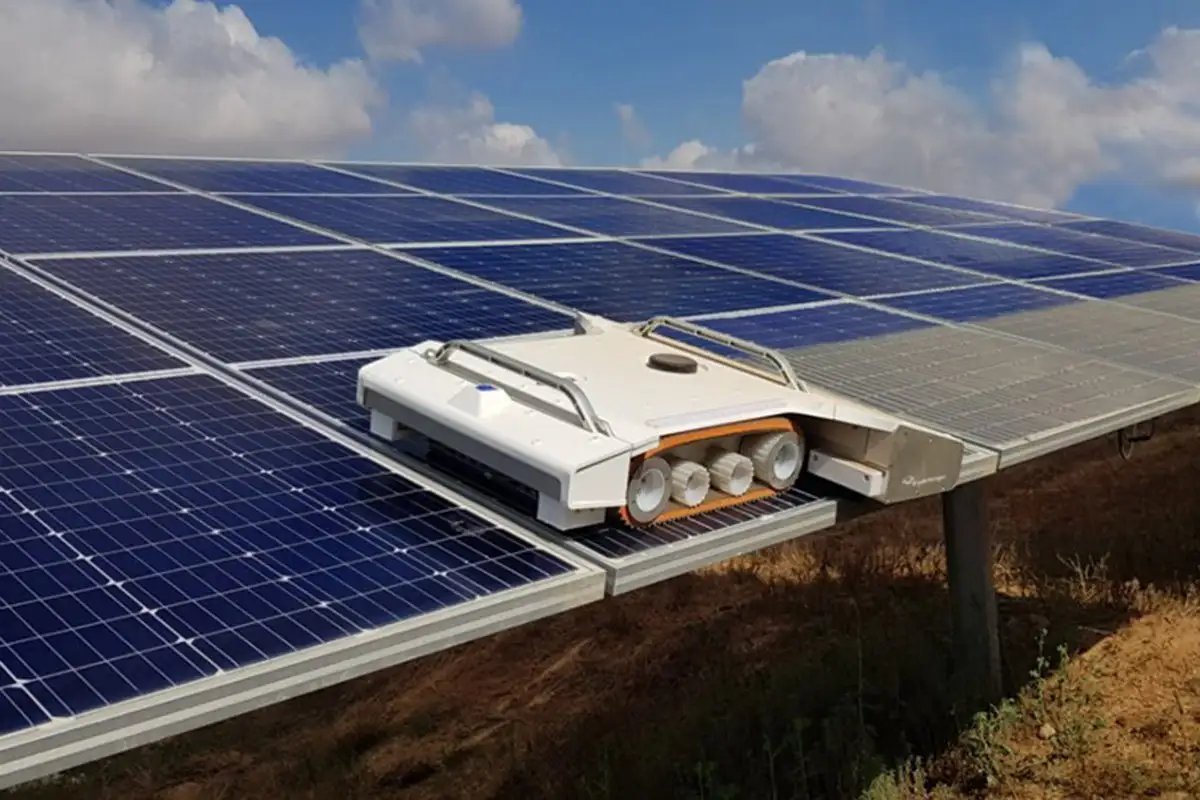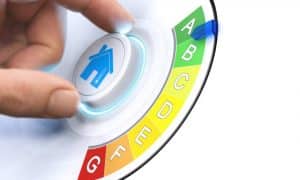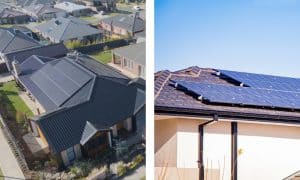The integration of robotic technology in renewable energy has emerged as a pivotal drive of innovation in Australia’s quest for sustainable energy solutions.
In this post, we will dive deeper into the transformative role of robotics in advancing the renewable energy sector and how these cutting-edge technologies are shaping the nation’s green energy future.
Types of robots used for solar energy exploration
The country’s vast and arid landscapes, combined with its commitment to harnessing renewable energy, have spurred the development and deployment of various types of robots for solar energy exploration.
These robotic technologies are designed to enhance efficiency, reduce maintenance costs, and improve the overall performance of solar energy systems.
Solar panel cleaning robots
Dust and debris can accumulate on solar panels, which affects their efficiency. Solar panel cleaning robots are equipped with brushes or wipers that autonomously traverse the surface of solar arrays, ensuring they remain free of dirt and grime. These robots help maintain optimal energy generation and minimise manual labour.
An example is SandStorm, a pioneering solution for cleaning PV systems through the partnership of Enel Green Power and REIWA. It’s a mobile robot that uses a system of specifically designed and manufactured brushes to clean PV panels. The robot is equipped with sensors that let it navigate autonomously through rows of PV panels.
For bigger installations, Solarcleano introduced the Solarcleano B1 that can clean up to 15MW per day of dry or wet cleaning. It is a perfect solution for solar farm ground-mounted solutions. They also have the F1A for huge rooftops that can clean day and night.
Drones for solar farm inspection
Drones equipped with cameras and thermal imaging technology are employed to inspect vast solar farms from the air. They can quickly identify damaged or malfunctioning solar panels and assess the overall condition of the installation.
This proactive approach to maintenance reduces downtime and ensures the long-term performance of solar arrays.
The DJI Mavic 2 Enterprise Advanced is one of the best in the market today for solar panel inspection. It’s compact with a fast deploy design and a thermal camera that can identify hot spots accurately.
PV Lab Australia and QE Las have also collaborated for the first drone-based electrocluminescence (EL) inspection of a solar farm. The technique can assess every single panel. In May this year, both companies conducted an EL drone inspection on over 40,000 panels at a large solar farm for nine nights with over 36 hours of flight time.
In a statement, “The ability of drone EL mapping to accurately pinpoint problematic modules is a game-changer for us. We can now selectively replace the worst-performing modules, wherever they are in the plant.”
Drones are indeed, useful, and it’s no secret that today’s solar installers are taking advantage of drone technology. As usage increased, the General Civil Aviation Safety Authority (CASA) made changes to drone usage for businesses. Today, drones should be registered, regardless of size and must have a Remotely Piloted Aircraft (RPA) operator accreditation.
Solar tracker robots
Solar trackers are designed to follow the sun’s movement throughout the day, maximising energy capture. Sunlight is abundant in the country, but the intensity varies. Solar trackers are often used to optimise energy production by keeping solar panels oriented toward the sun for extended periods.
Keep in mind that a solar tracker is dependent upon the latitude and climate of your location. In Australia, the greatest gain from this specific technology would be in Tasmania. Whilst in Sydney, you can expect a 30% gain in summer and a 10.9% gain in winter.
Robotic installation systems
The installation of solar panels can be labour-intensive and time-consuming. With robotic installation systems, it can automate this process and speed up the deployment of solar arrays. They are especially valuable in remote and harsh environments, making solar energy projects more feasible and cost-effective.
In 2021, The AES Corporation unveiled a solar panel installation robot, the Atlas, which can conduct precise placing and attachment of solar modules faster and cheaper. It also can install large solar panels.
Maintenance and inspection robots
These robots are equipped with sensors and cameras to inspect and diagnose issues in solar arrays. They can identify issues, such as loose connections, broken panels, or shading problems. Maintenance and inspection robots help prevent energy losses and reduce the need for manual labour in identifying and repairing issues.
Solar mapping and site assessment
Solar mapping and site assessment are critical processes in the development of solar energy projects, ensuring that PV installations are optimised for efficiency and effectiveness.
These procedures involve the careful analysis of environmental, geographical, and meteorological factors to determine the suitability and potential output of a solar energy system at a specific location.
By doing so, you can identify locations with the highest solar energy potential. Understanding the solar irradiance, shading patterns, and available space, developers can position solar panels for maximum energy generation.
In addition, accurate site assessments can reduce the risk of unexpected project costs and delays. It allows for efficient project planning, such as determining the number of solar panels, the type of mounting systems and the required infrastructure.
Assessing the site also takes into consideration environmental factors, ensuring solar installations have minimal adverse effects on local ecosystems. This includes evaluating land use, soil quality, and potential impacts on wildlife and vegetation.
Robots play a significant role in gathering data for assessing the solar potential of a specific location. Equipped with advanced sensors, cameras and precise measurement tools, they can collect vital information to determine the feasibility of solar energy generation.
The evolving role of robots in the solar energy industry
The role of robots in the solar energy industry has been evolving rapidly, contributing to increased efficiency, reduced costs and enhanced sustainability. Thanks to the vast and often remote landscapes of Australia, they have made the integration of robotic technology particularly valuable in this sector.
One of the primary areas where robots have made significant inroads is in the installation and maintenance of solar panels. Autonomous robots can efficiently lay out solar arrays and adjust panel angles to capture the maximum amount of sunlight, making the most of the country’s solar resources.
Robots are also playing a pivotal role in the inspection and maintenance of solar farms. Drones equipped with high-resolution cameras and thermal imaging technology are increasingly being used for aerial inspections of vast solar installations, identifying issues like damaged panels or loose connections.
Ground-based robots, on the other hand, can conduct routine maintenance tasks, such as cleaning solar panels or assessing the condition of tracking systems.
As the solar energy sector continues to expand, the evolving role of robots not only contributes to more efficiency energy production but also positions the industry to meet its sustainability goals and reduce the environmental footprint associated with solar panel upkeep.
The integration of robots in the quest for the solar energy of the future represents a remarkable synergy of innovation and sustainability. They are not merely tools for operational efficiency; they are instrumental in unlocking the full potential of solar energy.
With their ability to optimise solar panel placement, conduct precise maintenance and gather critical data, robots are paving the way for a greener, more reliable and economically viable energy landscape.
Their evolving role not only underscores the importance of automation but also promises to drive the solar industry toward a brighter and more sustainable future, harnessing the boundless power of the sun.
Energy Matters has over 17 years of experience in the solar industry and has helped over 40,000 Australian households in their journey to energy independence.
Complete our quick Solar Quote Quiz to receive up to 3 FREE quotes from trusted local installers – it’ll only take you a few minutes and is completely obligation-free.















































